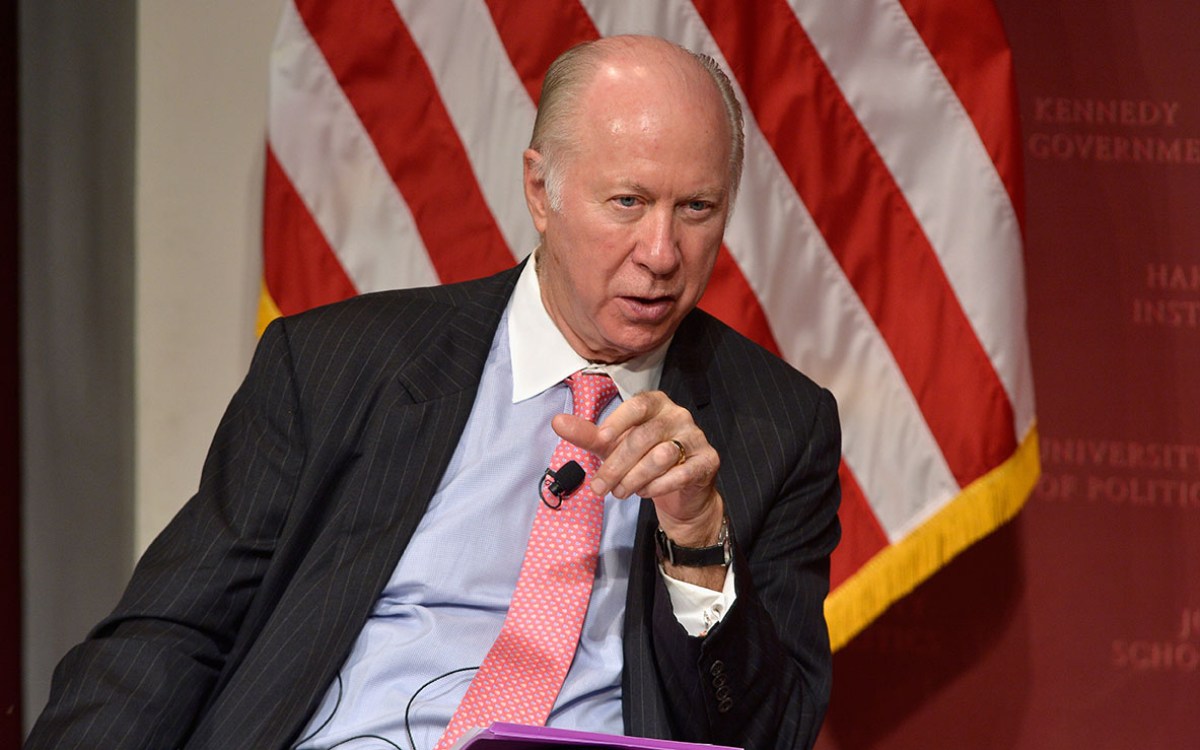‘Dirty Work’
Exhibit shows the transformation of landscape in ‘nonformal cities’ in the Americas
As reports of the subprime mortgage meltdown continue, an exhibition on view through March 16 in Gund Hall Gallery highlights a real estate crisis of an altogether different sort. A third of the world’s city dwellers — 1 billion people — live in shantytowns.
“Slums” is another term for these places, as is favelas. Yet another is “nonformal cities,” and that’s the one that has made its way into the title of the exhibition, “Dirty Work: Transforming the Landscape of Nonformal Cities in the Americas.”
But there’s rich irony in that title. Examined through the lens of current thinking about what sustainable urban development ought to be, these communities are seen to have a fair bit going for them. They’re compact and walkable, with a minimal carbon footprint. And they are not car-clogged — cars could barely get into most of them. And many of them, perched on steep hillsides outside the “formal” cities, command spectacular views.
Public policymakers are learning to look more kindly on them. After decades of trying to raze and depopulate such settlements, governments have shifted to trying to improve them. Efforts are being made to “regularize” them, by bringing electricity, water and sewer, transport, and other services to them, and by trying to establish a clear legal basis for land tenure by their residents.
“Dirty Work” examines the efforts of governments as well as planners, developers, and others in private practice to effect these transformations. “Dirty Work” is also intended to address a disparity within the field of landscape architecture and city planning: A third of the world’s urban population lives in slums, but only 1 percent of the world’s design professionals work there.
“We wanted to find the best practices for slum upgrades, and look at them through the lens of landscape,” explained Christian Werthmann, associate professor of landscape architecture and co-curator, with John Beardsley, senior lecturer in the Department of Landscape Architecture, of the exhibition.
For better or worse, these places don’t need or want architects. The buildings — private houses — are already there, built, and being perpetually added on to and improved, by their owners. What’s missing from these neighborhoods is the spaces between — parks, playgrounds, sometimes even paved streets.
The exhibition looks at 15 different projects in seven different cities of the Americas — Bogotá, Buenos Aires, Caracas, Mexico City, Rio de Janeiro, São Paulo, and Tijuana.
Why Latin America? It’s had plenty of experience with informal settlements and has become a leader in efforts to regularize nonformal settlements, even as population growth in its squatter cities has slowed. Africa and South Asia are the places where nonformal cities are expected to see strong population growth.
And what kind of projects? In Bogotá, TransMilenio, the low-cost, high-speed bus system, now provides “equalized mobility” for the poor, for instance. Alameda El Porvenir, a “promenade of the future” — a simple walkway — has been built to connect low-income communities and stimulate the development of commerce, just as the opening of a new highway is seen to do in the United States.
In the poor neighborhoods of Buenos Aires, children were desperate for space to play. Designers Flavio Janches and Max Rohm have designed playgrounds for them. Some have been built, with help from a Dutch foundation.
In Caracas, an outfit called Urban-Think Tank has built a multilevel “vertical gymnasium” on a 1,000-square-meter site in a densely populated barrio. It includes ball courts, a running track, and a rooftop soccer field. A cable car system is being built to connect one part of the barrio with another.
Other projects have involved reforestation and the reclaiming of water resources.
It may be dirty work, but designers and planners ought to do it. Moreover, they ought to be able to make a good living at it. Werthmann rejects the idea that work in the favelas can be done only on a pro bono basis. “It’s not a humanitarian deed. It can be seen as a real professional opportunity.”




